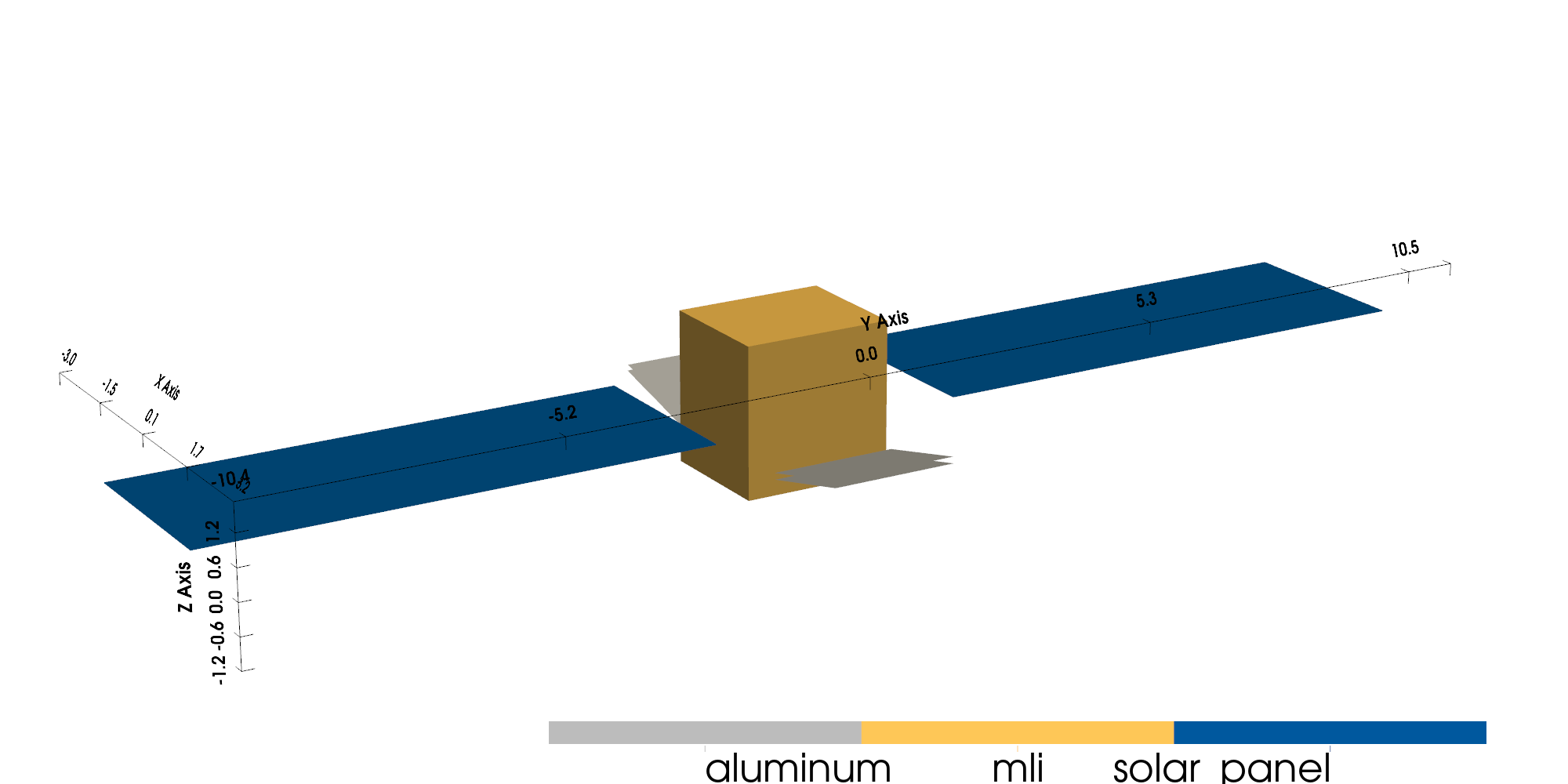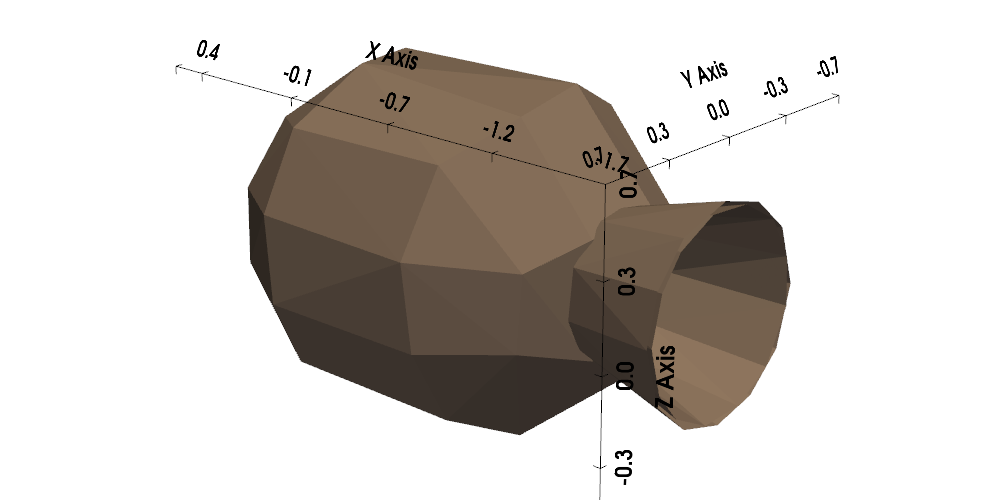Note
Go to the end to download the full example code.
Plotting models#
Plotting the 3D models used in the case studies
import numpy as np
import pyvista as pv
import mirage as mr
import mirage.vis as mrv
def main():
mr.set_model_directory(
'/Users/liamrobinson/Documents/maintained-research/mirage/examples/15-attitude-sdc-2025/models'
)
obj_true = mr.SpaceObject('echostar-ii-tri.obj')
obj_true_mat = mr.load_obj(obj_true.file_name)
# obj_true_mat.material_vals = (
# 0 * (obj_true_mat.material_names == 'starlink_panel')
# + 0 * (obj_true_mat.material_names == 'none')
# + 1 * (obj_true_mat.material_names == 'aluminum')
# + 2 * (obj_true_mat.material_names == 'mli')
# )
obj_true_mat.material_names[obj_true_mat.material_names == 'starlink_panel'] = (
'solar_panel'
)
obj_true_mat.material_names[obj_true_mat.material_names == 'none'] = 'solar_panel'
from matplotlib.colors import ListedColormap
# Define the colors we want to use
blue = np.array([0 / 256, 89 / 256, 159 / 256, 1.0])
grey = np.array([189 / 256, 189 / 256, 189 / 256, 1.0])
yellow = np.array([255 / 256, 200 / 256, 88 / 256, 1.0])
newcolors = np.vstack((grey, yellow, blue))
p = pv.Plotter(window_size=(2000, 1000))
mrv.render_spaceobject(
p,
obj_true_mat,
origin=(0, 0, 0),
scalars=obj_true_mat.material_names,
show_scalar_bar=True,
scalar_bar_args=dict(label_font_size=50),
cmap=ListedColormap(newcolors),
)
p.camera.position = (50, -30, 20)
p.camera.up = (0, 0, 1)
p.camera.zoom(2.7)
p.show_bounds()
p.show()
obj_true = mr.SpaceObject('star37e.obj')
p = pv.Plotter(window_size=(1000, 500))
mrv.render_spaceobject(
p,
obj_true,
origin=(0, 0, 0),
cmap=ListedColormap(np.array([156 / 256, 132 / 256, 112 / 256, 1.0])),
scalars=obj_true.f[:, 0], # Dummy scalars to activate the colormap
show_scalar_bar=False,
)
p.camera.position = (-6, 6, 3)
p.camera.up = (0, 0, 1)
p.camera.zoom(2.3)
p.show_bounds()
p.show()
if __name__ == '__main__':
main()
Total running time of the script: (0 minutes 0.683 seconds)


